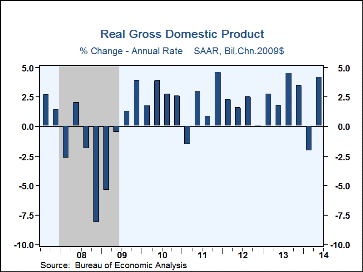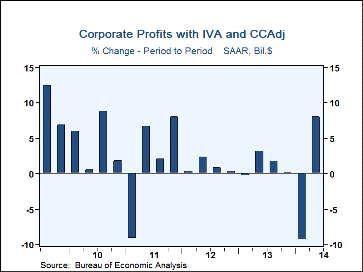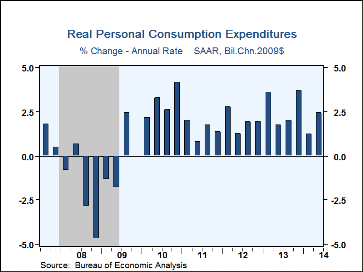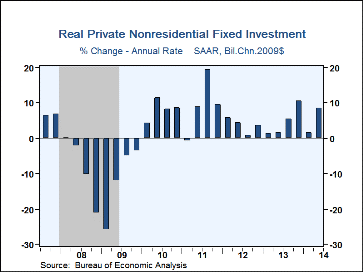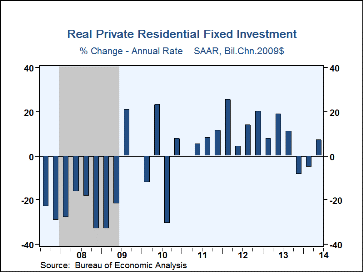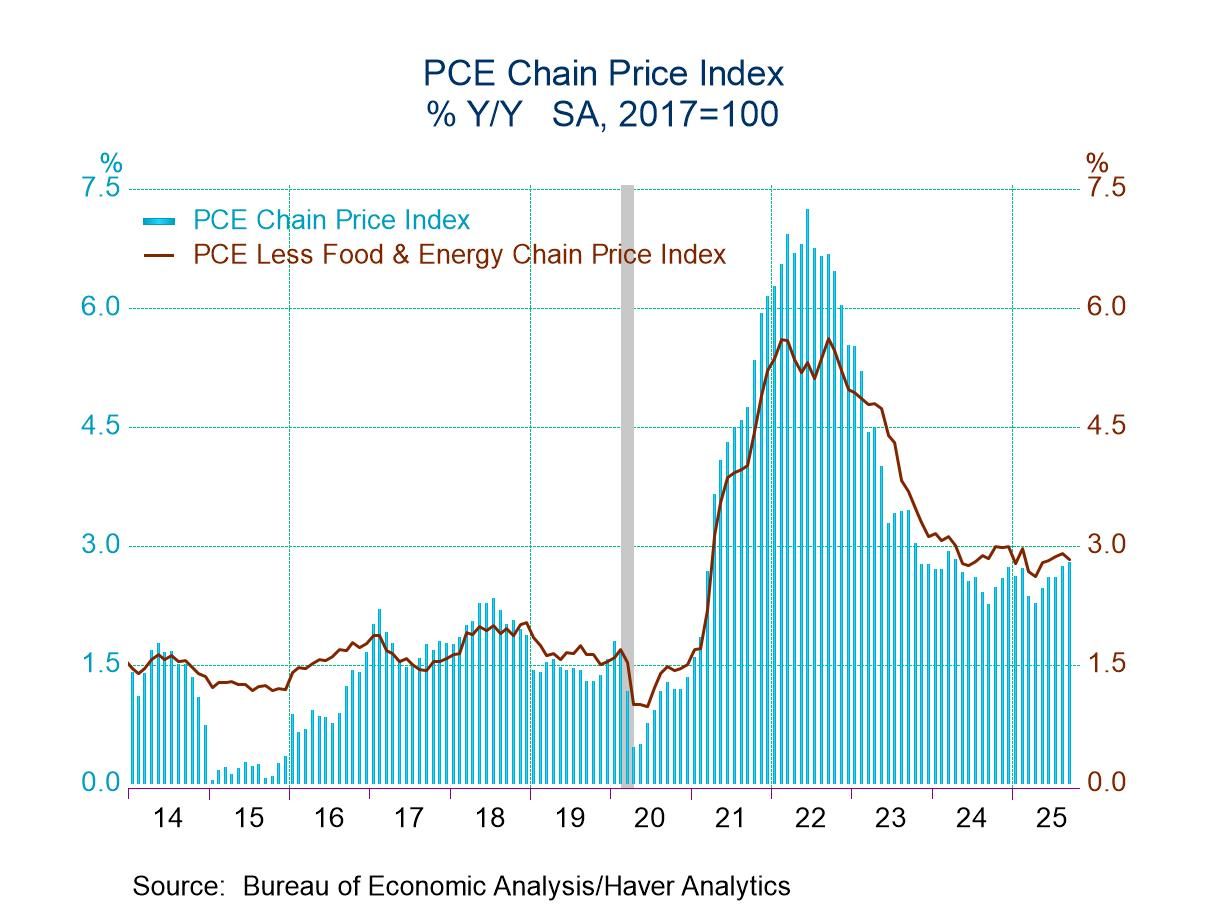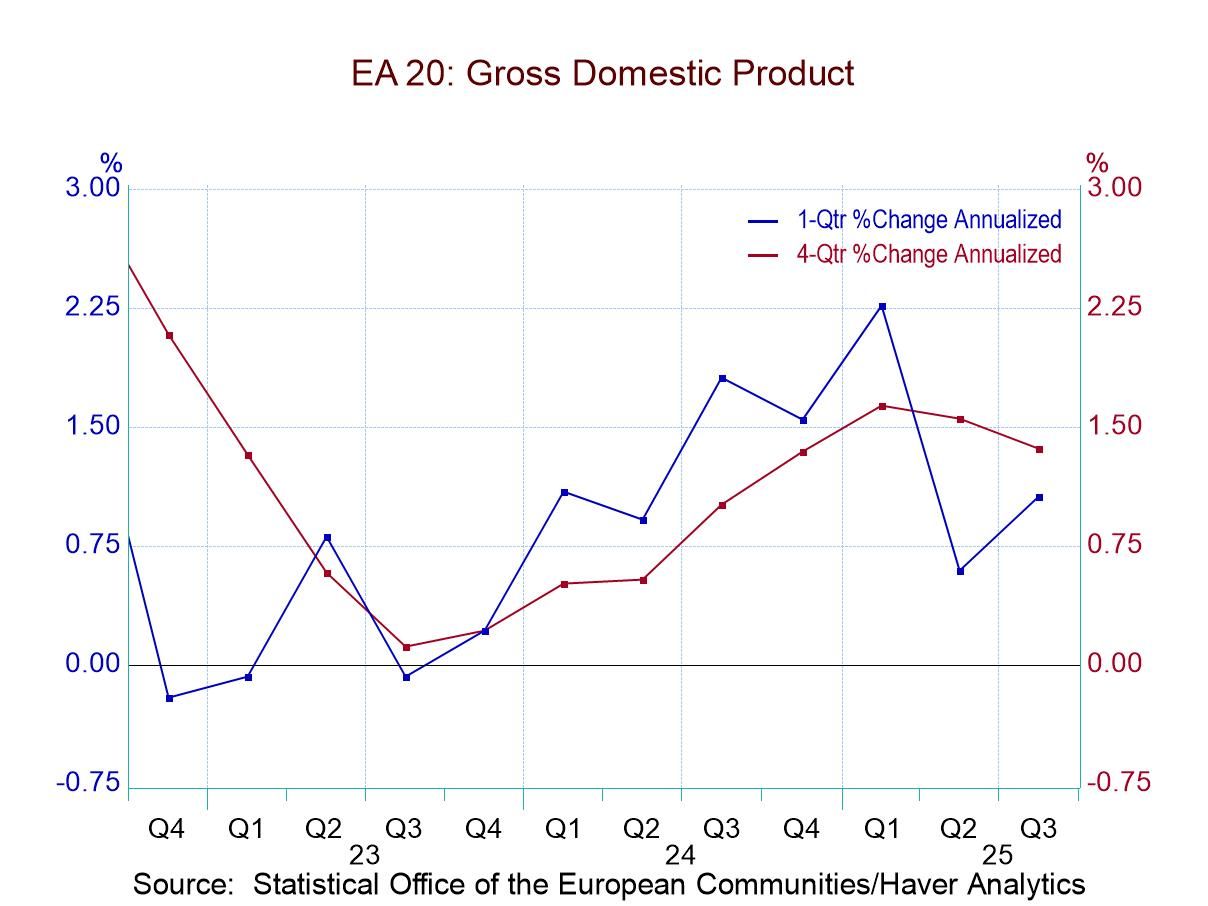 Global| Aug 28 2014
Global| Aug 28 2014U.S. GDP Growth Is Revised Up; Corporate Profits Surge
by:Tom Moeller
|in:Economy in Brief
Summary
The economic recovery garnered more strength than estimated earlier. The second GDP estimate for Q2 indicated a 4.2% rate of growth, revised up from 4.0%. The gain followed a 2.1% Q1 decline and beat expectations for 3.9% growth in [...]
The economic recovery garnered more strength than estimated earlier. The second GDP estimate for Q2 indicated a 4.2% rate of growth, revised up from 4.0%. The gain followed a 2.1% Q1 decline and beat expectations for 3.9% growth in the Action Economics Forecast Survey. The bulk of the upward revision was due to strengthened growth in business fixed investment.
Accompanying the revision was the first estimate of corporate profits. The 8.0% rise (-0.3% y/y) in pretax earnings followed a 9.4% Q1 decline and was the strongest gain since Q3 2010. Earnings at nonfinancial firms gained 10.6% (1.4% y/y). Financial corporate profits rose 7.3% (-6.8% y/y) and earnings from abroad improved 1.2% (2.4% y/y).
Business fixed investment drove GDP growth last quarter. The 8.4% gain (6.4% y/y) was revised from 5.5% and reflected a 10.7% rise (7.0% y/y) in equipment spending. Information processing equipment realized a 26.3% gain (3.9% y/y) and industrial equipment rose 27.1% (14.6% y/y). Spending on intellectual property products improved 4.5% (3.9% y/y). Structures spending grew 9.5% (9.0% y/y).
Consumer spending growth was unchanged at 2.5% (2.3% y/y), spurred by a 19.9% gain (7.9% y/y) in motor vehicles & parts. Furniture and durable household equipment improved 12.6% (6.7% y/y) and spending on clothing increased 5.3%, unchanged y/y. Spending on services gained 0.8% (1.8% y/y). Recreation spending increased 3.4% (1.5% y/y) but housing & utilities declined 3.3% (0.6% y/y). Residential building grew at a 7.2% rate (0.8% y/y) and recovered a 5.3% weather-induced decline in Q1. Government spending increased 1.4% (-0.8% y/y) after a 0.8% decline. It reflected a 2.9% increase (0.8% y/y) in state & local and a 0.9% dip (-3.2% y/y) in federal government outlays.
A quickened rate of inventory accumulation added 1.4 percentage points to growth last quarter, revised from 1.7 points. The addition recouped two quarters of inventory liquidation. Deterioration in the foreign trade subtracted a little- revised 0.4 percentage points from growth. A 10.1% rise (3.7% y/y) in exports trailed an 11.0% gain (3.7% y/y) in imports.
Price inflation was unrevised. The 2.1% rise (1.7% y/y) in the chain-type price index followed a 1.3% increase in Q1. The acceleration reflected a 2.3% rise (1.6% y/y) in the personal consumption price index. The business fixed investment price index gained 1.2% (1.3% y/y).
The latest GDP figures can be found in Haver's USECON and USNA databases; USNA contains basically all of the Bureau of Economic Analysis' detail in the national accounts, including the integrated economic accounts and the recently added GDP data for U.S. Territories. The Action Economics consensus estimates can be found in AS1REPNA.
| Chained 2009 $, %, AR | Q2'14 (Second Estimate) | Q2'14 (Advance Estimate) | Q1'14 | Q4'13 | Q2 Y/Y | 2013 | 2012 | 2011 |
|---|---|---|---|---|---|---|---|---|
| Gross Domestic Product | 4.2 | 4.0 | -2.1 | 3.5 | 2.5 | 2.2 | 2.3 | 1.6 |
| Inventory Effect | 1.4 | 1.7 | -1.2 | -0.3 | 0.3 | 0.0 | 0.1 | -0.1 |
| Final Sales | 2.8 | 2.3 | -1.0 | 3.9 | 2.2 | 2.2 | 2.2 | 1.7 |
| Foreign Trade Effect | -0.4 | -0.6 | -1.7 | 1.1 | 0.0 | 0.3 | 0.1 | 0.0 |
| Domestic Final Sales | 3.1 | 2.8 | 0.7 | 2.7 | 2.2 | 1.9 | 2.1 | 1.7 |
| Demand Components | ||||||||
| Personal Consumption Expenditures | 2.5 | 2.5 | 1.2 | 3.7 | 2.3 | 2.4 | 1.8 | 2.3 |
| Business Fixed Investment | 8.4 | 5.5 | 1.6 | 10.4 | 6.4 | 3.0 | 7.2 | 7.7 |
| Residential Investment | 7.2 | 7.5 | -5.3 | -8.5 | 0.8 | 11.9 | 13.5 | 0.5 |
| Government Spending | 1.4 | 1.6 | -0.8 | -3.8 | -0.8 | -2.0 | -1.4 | -3.0 |
| Chain-Type Price Index | ||||||||
| GDP | 2.1 | 2.0 | 1.3 | 1.5 | 1.7 | 1.5 | 1.8 | 2.1 |
| Personal Consumption Expenditures | 2.3 | 2.3 | 1.4 | 1.0 | 1.6 | 1.2 | 1.8 | 2.5 |
| Less Food/Energy | 2.0 | 2.0 | 1.2 | 1.3 | 1.5 | 1.3 | 1.8 | 1.5 |
Tom Moeller
AuthorMore in Author Profile »Prior to joining Haver Analytics in 2000, Mr. Moeller worked as the Economist at Chancellor Capital Management from 1985 to 1999. There, he developed comprehensive economic forecasts and interpreted economic data for equity and fixed income portfolio managers. Also at Chancellor, Mr. Moeller worked as an equity analyst and was responsible for researching and rating companies in the economically sensitive automobile and housing industries for investment in Chancellor’s equity portfolio. Prior to joining Chancellor, Mr. Moeller was an Economist at Citibank from 1979 to 1984. He also analyzed pricing behavior in the metals industry for the Council on Wage and Price Stability in Washington, D.C. In 1999, Mr. Moeller received the award for most accurate forecast from the Forecasters' Club of New York. From 1990 to 1992 he was President of the New York Association for Business Economists. Mr. Moeller earned an M.B.A. in Finance from Fordham University, where he graduated in 1987. He holds a Bachelor of Arts in Economics from George Washington University.


